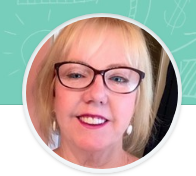Story Mapping: Ways It Helps You Boost Your eLearning Project
You may be thinking whether Story Mapping can really help you design better learning experiences. The truth is that is does help you develop these, as well as deliver them in a quicker way too. But what is it exactly?
1. User Story Map: "Don’t Lose Sight Of The Big Picture"
A user story map is a tool that has been invented by Jeff Patton and explained thoroughly in his book User Story Mapping. Jeff has been using story mapping to design software products over the last 10 years. Here is how he describes it:
"Story maps look at a product or feature from the users’ perspective. It solves one of the big problems of (agile) product development: losing sight of the big picture".
How does it work concretely? It’s a map that tells the story of the user experience in different steps, and listing by priority, for each step, all the possibilities the user has.
As a picture is worth 1000 words, here is a storymap for a user watching a film online:

This example is driven from Easy Agile blog. For an online movie provider, doing this map would help designing a coherent user experience and prioritize features against each other in order to build the product releases.
2. Design A Powerful Learning Experience. Tell The Story. Generate Many Ideas.
If you had to design the user experience of a learner following a blended course, what would be the blocks of the story? Spontaneously, one would think of: User learns online/learns in class, no? But, actually the user experience is much richer than this:
- Before he actually learns online, the participant is informed about the course.
- He, then, discovers the course.
- During the course, he is constantly engaged to keep on learning.
- After a while, he finally finishes the course.
- He "goes back to work" - even if he never had left work. ;-)

Mapping the whole story helps us to not forget important parts of the story and to have everything on one board rather than splitting the program into topics: pedagogy, communication, project.
So, as Jeff Patton said, "not to lose sight of the big picture". To get there, you need to gather different stakeholders of the learning experience (Learning and Development, learner, Subject Matter Expert, learners' manager etc.) during a workshop, where each stakeholder holds a set of post-its and shares point of views. This is not only a good way to draw the whole experience, but also to align everyone on it. Once you have your full main story, you can enrich it with stories just like in the previous example. Again, this is a collaborative process in brainstorming mode.

Please note that stories presented above are pure examples. They all depend on what you want to achieve in terms of KPIs and learning objectives, the timing, the audience of the program, the company’s learning culture. To draw a relevant storymap for your program, you first have to be clear on all those aspects.
3. Prioritize With MoSCoW. Build Releases. Deliver Faster.
eLearning is often preferred to classroom learning to reduce the time to skill. But, it appears that designing an online program may take some time and, between the moment you start the design and the moment you implement, many employees would have needed the skills, and/or learning priorities have changed.
Storymapping can help you speed up the delivery of the program. How? By helping you prioritize stories against each other and sorting them on the map from most important (high) to less important (low). To identify what you want to release 1st, 2nd, and 3rd, you can use a very efficient and simple method: The MoSCoW method, as Must, Should, Could, and Would but Won’t.

The most important thing is to be able to identify the Must—what needs to be present in the first release, and the Should—what should be included if possible in the first release. The Must stories are the things that you must have because they are the essence of your learning experience - not depending on the effort to design, produce, test. The Should stories are very nice but will be included only if there is still time and money once the Must have been done.
As you do this exercise, you will probably split stories into substories and identify that one is a must, and the other one a should. Imagine you absolutely want a video teaser to advertize the program, as this is a strategic program for the whole company: You can split in "a clip with photos and music"/ "a video with scenario and voice over". The first one being a Must and the second one a Should.
In order to release faster, you can sometimes make drastic choices, as deciding that you won’t include one part of the learning experience in the 1st release. For example, release the program only with digital and not in class learning, or vice versa. Or decide not to address one of the learning objectives or topics.
Thanks to storymapping, all those choices are very visual, and you avoid the risk to forget important things versus minor ones: for example over-focus on final certification and forget about continuous learner engagement. Once priorities are clear, you can plan your releases, give them a goal and a date estimate for each. You can start detailing the Backlog of your first release based on the stories you selected.
4. Build Consensus. Engage Your Team Towards A Common Goal. Use Story Map As A Communication Tool.
As evoked many times in this article, the Story Mapping process is not a solitary one. It’s the result of a fruitful workshop gathering main stakeholders of the program. One representative for each type of stakeholders actually, in order to avoid overcrowded workshop.
At each stage of the process, building the learner experience, enriching it with stories, prioritizing them to build releases, everyone is engaged. Thanks to the group, more ideas are produced and they are better prioritized. Quickly, there is an exciting atmosphere of co-construction in the room.

The prioritization exercise may be sometimes tough because it’s hard for stakeholders to accept that their idea is not a must. Nevertheless, the fact that maybe several releases reduce the pressure of the choice, as many "Should stories" for release 1 may become "Must stories" for release 2.
At the end of the storymapping process, everyone should feel more confident on the quality of the learning experience and its delivery over the time. Sharing a clear vision of the product will motivate the core team throughout the program design phase.
The storymap that is produced can be used as a communication tool to a broader population in order to inform them about the design process: HR team, external providers, other SMEs etc. You can also use it to engage learners, well before the program starts, in order to tease them about the fact you’re preparing something for them.
Want to deliver a better quality learning experience, faster and with a motivated team? Try Story Mapping!








